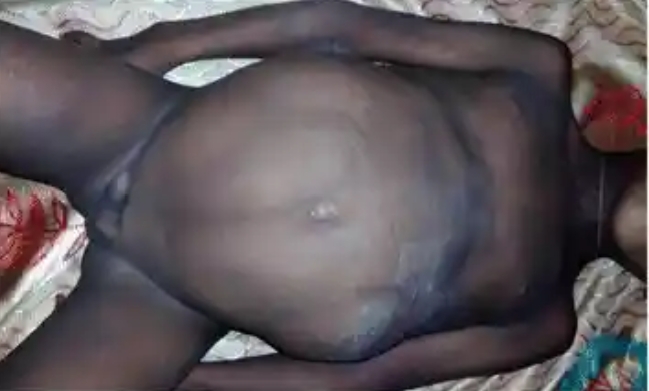A 12 year old boy from Ethiopia becomes the eldest patient with the Prune Belly Syndrome
He presented with a swelling on his left flank. The swelling was three months old but the pain was recent and it was also associated with high-grade fever and chills. He was born through an uncomplicated vaginal delivery and his past medical history was insignificant.
Abdominal examination showed asymmetrical enlargement with a tender mass in the left flank. In addition, there was a complete absence of rectus abdominis muscles. His vitals indicated hypotension and an elevated heart rate. His body measurements revealed stunting, i.e., short for age. Furthermore, the doctors noticed he had undescended testes. He also had a lateral bend in his spine, i.e., scoliosis.
A Classical Triad!
An ultrasound of the boy’s abdomen revealed a cyst in the left kidney. Moreover, his urinalysis showed elevated red blood cells. Based on the classical triad of undescended testes, abdominal abnormalities and renal disease, doctors diagnosed the boy with Prune belly syndrome (PBS).
Doctors removed both his testes (bilateral orchidectomy) and his left kidney (nephrectomy). Moreover, he was kept on antibiotics for his urinary tract infection for 14 days. Shortly after, the doctors discharged him. They also arranged a follow-up appointment to discuss hormone replacement therapies owing to bilateral removal of testes in the patient.
What’s So Unusual About this Case?
Prune belly syndrome is a congenital disorder that usually presents in neonates or infants. This case represents a presentation at 12 years of age indicating that the boy remained undetected despite the hospital birth. Therefore, it raises serious questions about the awareness among health professionals regarding PBS.
Source: Demisse, A.G., Berhanu, A. & Tadesse, T. Unusual presentation of prune belly syndrome: a case report. J Med Case Reports 11, 337 (2017). https://doi.org/10.1186/s13256-017-1487-9




